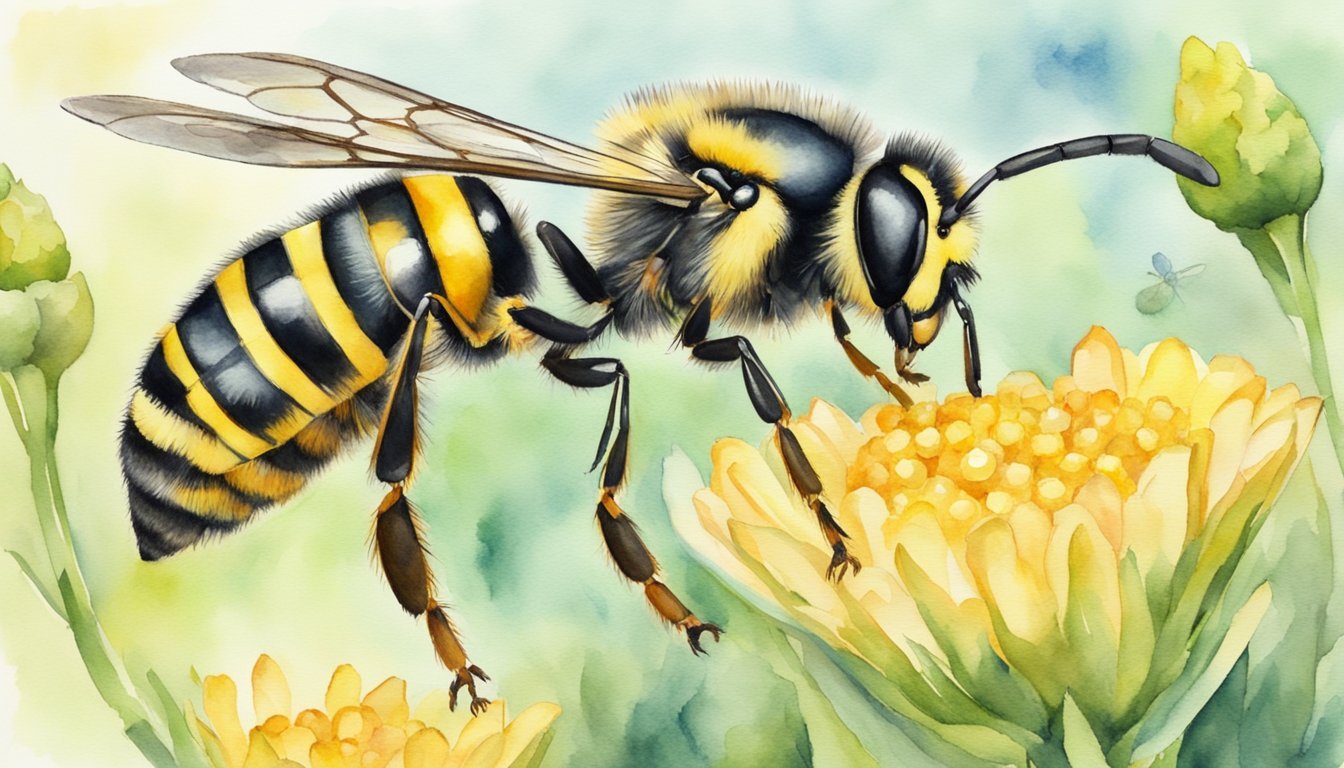Misconceptions About Wasps and Honey

Wasp Species and Honey Production
Contrary to popular belief, not all wasps are involved in honey production. Most wasp species do not produce honey; however, there is an exception in the Brachygastra genus. Some wasp species in this group, like Brachygastra mellifica, are known to create a sweet liquid called “wasp honey.” The female wasps usually produce this to feed their larvae.
Mexican honey wasps are an interesting example of wasps that make honey. They collect nectar from various flowers, just like honey bees. These wasps also gather honeydew, a sugary substance secreted by insects like aphids, which adds a distinctive taste to the honey they produce.
Comparing Wasps With Honey Bees
The misconception that all wasps make honey may stem from their close relationship with honey bees. Both insects are part of the Hymenoptera order, but there are a few differences between them. Honey bees (Apis mellifera) are generally larger, fuzzier, and have an orangish-brown color, while wasps have a more vibrant yellow and black color pattern with shiny, hairless bodies. The most significant difference lies in their honey production patterns.
Honey bees are known for their honey-making abilities, as they have specialized wax glands to create honeycombs where they store the nectar they collect from flowers. They evaporate the water content and leave behind the thick golden liquid we know as honey.
On the other hand, wasps, in general, do not have such glands and typically do not produce and store honey. However, the honey-producing wasps in the Brachygastra genus also resemble bees in terms of their colony size. For example, Brachygastra lecheguana colonies can have as many as 15,000 wasps, while honey bee colonies may range from 20,000 to 50,000 bees.
In conclusion, it’s important to note that while some wasps, like the Mexican honey wasps, are capable of producing honey, most wasps do not. The similarities and differences between wasps and honey bees highlight nature’s fascinating diversity.
The Ecological Role of Wasps in Nature

Wasps play a vital role in maintaining the balance within ecosystems. They contribute to pest control, pollination, and have unique interactions with plants and other insects. In this section, we will explore how wasps fulfill these ecological functions.
Predation and Pest Control
Wasps are natural predators of many pests that are harmful to crops and plants. Adult wasps feed on various insects, such as aphids, caterpillars, and spiders, which would otherwise damage the plants. The larvae of some wasp species also have a carnivorous diet, mainly consuming insect prey to meet their protein needs. Predatory wasp species, such as yellowjackets and hornets, are efficient hunters that neutralize pests effectively.
The presence of wasps in gardens and farms contributes to natural pest control, reducing the need for chemical pesticides. It’s essential to remember that the wasps in South America help in controlling the population of ants and other insects, thereby maintaining the overall balance in the ecosystem.
Pollination and Plant Interaction
While wasps are not as efficient as bees in pollination, they still contribute significantly to pollinating plants. They are particularly important for the pollination of certain fruit. Some plants, such as Ficus spp., rely on wasps for their reproduction, as the wasp utilizes the plant to lay its eggs.
In addition to pollination, wasps participate in interesting plant interactions, such as collecting sugary substances and water content from plants. Some plants even produce extrafloral nectaries to attract wasps and other insects.
It’s noteworthy to mention the dietary habits of some South American wasps, which include honeyeaters. These wasps feed on a sweet substance derived from specific plants, resembling honey. However, this should not be confused with bee-produced honey, as it differs in its composition and enzymes.
In conclusion, the ecological role of wasps in nature is essential for the balance and biodiversity of various ecosystems. From being predators that control pests to aiding in pollination, their presence positively impacts the environment.

